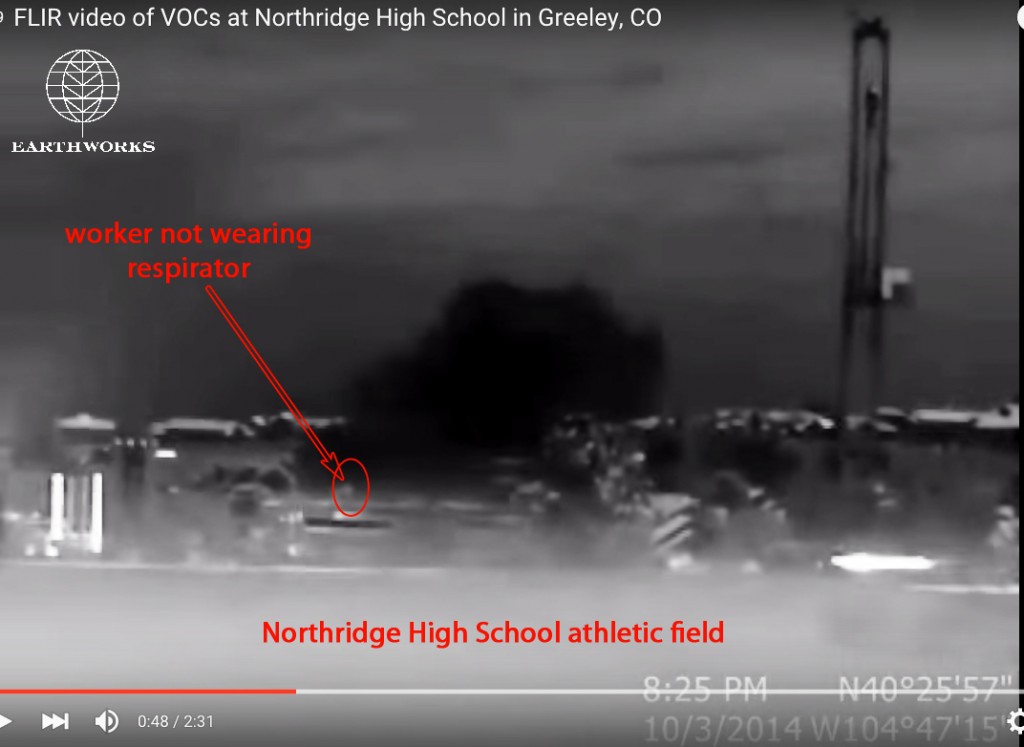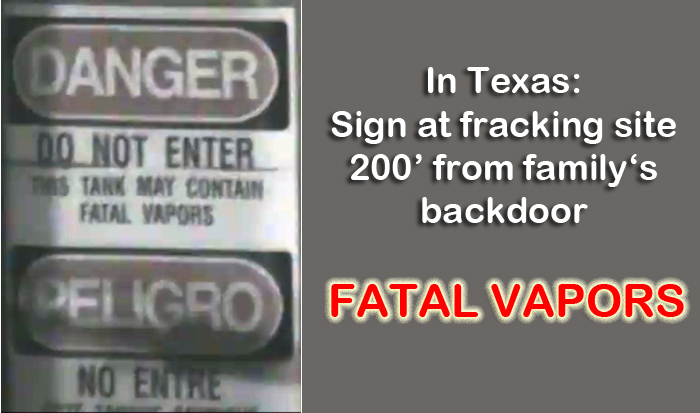
First get some tissues. Next:
Read this tragic story about workers killed by deadly hydrocarbon fumes:
How shale oil can kill
Mike Soraghan, E&E reporter
EnergyWire: Monday, September 14, 2015When Joe Morales found him, Jim Freemyer was standing over the hatch, dazed and miming the gestures of measuring the crude oil tank with nothing in his hands.
Later, Freemyer wouldn’t even remember Morales guiding him off the catwalk. All he recalled was smelling something like gasoline and getting dizzy.
After that, Freemyer, a truck driver from nearby Evans, Colo., demanded a mask to protect him from the fumes.
But it didn’t. He was wearing the mask three weeks later, when another co-worker found him face down over a different hatch. This time, he was dead.
It seems that Now or Never Trucking knew the workers were in danger because “another Now or Never employee, Joe Ray Sherman, also found dead on a catwalk at a well site in the same county.” They ignored the danger, even discouraged Freemyer from wearing a respirator, and it cost men their lives and no telling how many men have damaged health. A $20k fine seems anemic compared to the loss. I do not understand how a company can negotiate an already anemic fine down to a meaningless $12,500. How the hell is that okay?
“That happens. That’s part of the industry.”
Last September I was in Greeley, Colorado as part of Earthworks’ Citizens Empowerment Project. I was standing on the Northridge High School parking lot looking at some Synergy Resources Corporation wells adjacent to the athletic field when a truck pulled up to empty the tanks. (Yes, you read that right. There is a heavy industrial mining operation that shares a fence line with a high school football field.) What I saw through the FLIR GF320 camera looked like the earth opening up and spewing out a thick black cloud of death all over the upscale neighborhood across the street. And right there at the source, I could see a man walking back and forth on top of the tanks. You can see him too if you look closely. Look right above the truck at about 31 seconds in. At about 41 seconds in he bends over a little and does something to the tank.
Bruce Baizel, Earthworks Energy Program Director, was with me looking through binoculars. I asked him if the guy was wearing a mask and he said it didn’t appear so. That’s one lucky fella. Click HERE for a larger version of the featured image.
We gave the video to some moms whose teenagers attend Northridge High School. They were understandably upset and Synergy’s Chief Operating Officer, Craig Rasmuson, didn’t help matters much when he basically told the Greeley Tribune that it happens all the time.
Rasmuson explained in an email to numerous regulatory officials that the video, which was shot in mid-September by Texas-based environmental group Earthworks, shows a hatch on a storage tank was open while an oil truck was being filled.
“Long story short, that’s what she saw and that’s what she shot,” Rasmuson said in a phone interview Wednesday. “That happens. That’s part of the industry. For that 20-30 minutes it takes to load a truck, the hatch is open.” Link to story in Word document
Will Allison, director of the state Air Pollution Control Division confirmed that “Opening a hatch to fill a truck would fall into the allowable activity category.”
For 20-30 minutes however many times a day a truck comes to remove the liquids from the tanks, the tank hatch is open spewing out vapors that we know are potentially lethal. This is happening at facilities in neighborhoods everywhere, everyday. Rhetorical question: Could these vapors that kill grown men make kids playing next door sick?
These facilities do not belong in neighborhoods.
This is why we need the EPA methane rules
Dear Readers:
Help me help you! Please sign up to speak at the nearest of only three hearings in this country where EPA officials will listen to us. They need to know that we need and want their help. It’s abundantly clear that our state regulators and our state lawmakers do not intend to help us. This is your chance to do something about the deadly hydrocarbon fumes and fracking too close to homes.
Sign up: EPA public hearing for proposed methane rule
Also see: Fracking emissions bad enough to cause death or severe health impacts
About Sharon Wilson
Sharon Wilson is considered a leading citizen expert on the impacts of shale oil and gas extraction. She is the go-to person whether it’s top EPA officials from D.C., national and international news networks, or residents facing the shock of eminent domain and the devastating environmental effects of natural gas development in their backyards.
- Web |
- More Posts(5121)

Anpother excellent post. Shows that “stuff” is really comming out of those many, many vent pipes and stacks at O&G facilities that has nothing coming out as seen with the naked eye. After all, those vent pipes are not there for esthetics! Lots of this kind of venting all over the oil & gas patch. Lots of this kind of stuff also in Booger County.
Devastating. Thank you for reporting on this. Those workers are no better protected than miners in the coal mines, whom the coal companies see as disposable. Rather than sending workers deep down below into the dangers underground, the frackers send truckloads of hazardous chemicals underground and leak poisonous gases which together spread upwards and outwards to endanger everyone nearby on land.